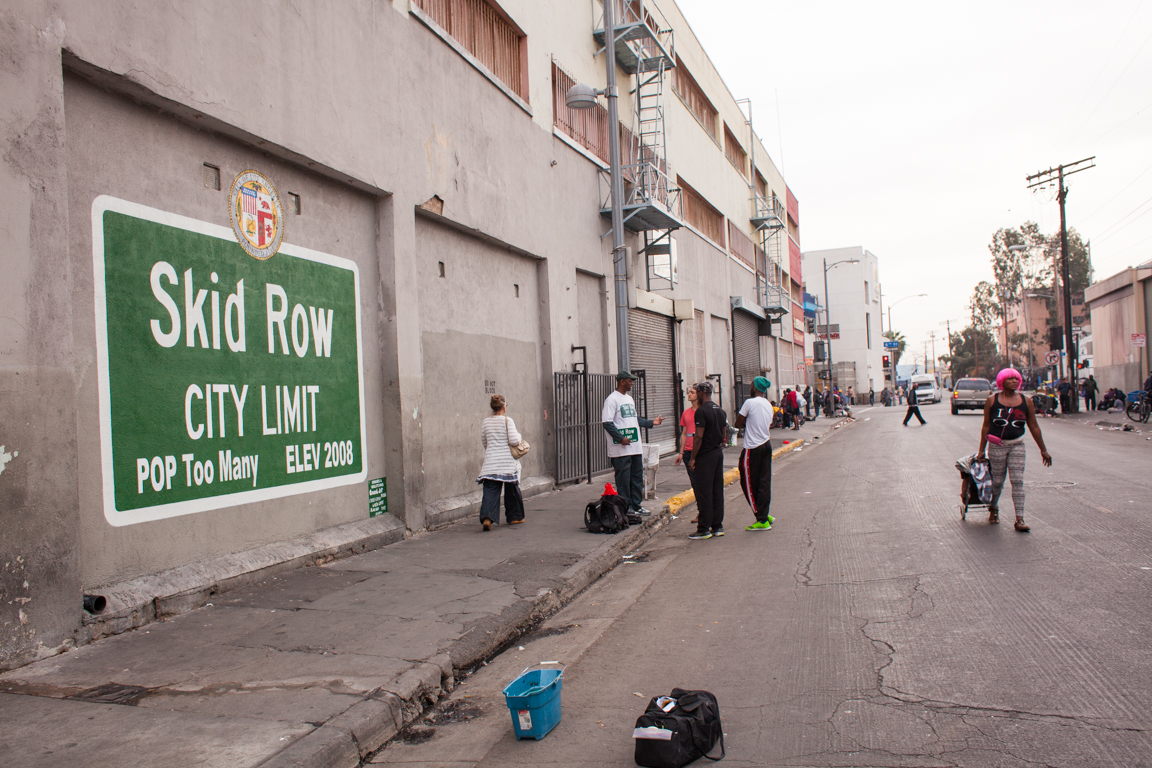[Editor’s Note: In the community’s continuing campaign to gain what it deems the strongest safety standards before an oil drilling company is permitted to expanding drilling in the Inglewood Oil Field, land use attorney/Culver Crest neighborhood leader Ken Kutcher dispatched the following letter yesterday to a state official based in Orange County.]
May 26, 2009
Ed Brannon
District Deputy for Cypress District (District 1)
Division of Oil, Gas and Geothermal Resources
5816 Corporate Ave., Suite 200
Cypress, CA 90630
Re: PXP's Notices of Intention to Drill Four New Wells in the Inglewood Oil Field.
Proposed Well Nos. BC LAI1 465, LAI1 466, LAI 1 473, & VRU 363.
Dear Mr. Brannon:
This letter is submitted on behalf of the Greater Baldwin Hills Alliance, the Culver Crest Neighborhood Association, Community Health Councils, the Natural Resources Defense Council, The City Project, and Concerned Citizens of South Central Los Angeles.
The purpose of this letter is to protest and oppose the four above-referenced applications by Plains Exploration & Production Company (“PXP”) for permission to drill four new wells in the Inglewood Oil Field. These applications were filed on May 15, 2009.
For the reasons described below, it is our position that the applications are premature and should be denied, withdrawn or held in abeyance pursuant to the authority vested in the State's Oil and Gas Supervisor by Public Resources Code Sections 3106 and 3203.
BACKGROUND
Public Resources Code Section 3106(a) charges the Supervisor with, among other responsibilities, preventing damage to life, health, property and natural resources:
“The supervisor shall so supervise the drilling, operation, maintenance, and abandonment of wells and the operation, maintenance, and removal or abandonment of tanks and facilities attendant to oil and gas production . . . so as to prevent, as far as possible, damage to life, health, property, and natural resources.”
Furthermore, Public Resources Code Section 3203(a) provides:
“Drilling shall not commence until approval is given by the supervisor or the district deputy.” As explained below, there are ample and justified reasons why the four proposed drilling permits should not be granted at this time.
DEFICIENCIES
A. Critical Supplemental Information Is Missing From PXP's Applications In Order To Prevent Codified Public Nuisances.
Public Resources Code Section 3600 provides:
“Except as otherwise provided in this chapter, any well hereafter drilled for oil or gas, or hereafter drilled and permitted to produce oil or gas, which is located within 100 feet of an outer boundary of the parcel of land on which the well is situated, or within 100 feet of a public street or road or highway dedicated prior to the commencement of drilling of the well, or within 150 feet of either a well being drilled or a well theretofore drilled which is producing oil or gas or a well which has been drilled and is not producing but which is capable of producing oil or gas, is a public nuisance.”
Furthermore, Onshore Well Regulations Section 1720(a) defines a “critical well” to mean a well located within 300 feet of any building intended for occupancy or within 100 feet of any public street or public recreational facility.
The Inglewood Oil Field is crossed and bounded by many public roads, including La Cienega Boulevard, Stocker Street, La Brea Avenue, and Fairfax Avenue. The Inglewood Oil Field has approximately 820 wells that have not been abandoned (436 active producing wells, 207 active water injection wells and 177 idled wells). (Baldwin Hills Community Standards District FEIR at p. 2-16 [http://planning.lacounty.gov/assets/upl/project/].) Several public recreational facilities are located along the boundaries of the Inglewood Oil Field, including Kenneth Hahn State Recreation Area and the Ladera Ball Fields. Various residences and other buildings are also located along boundaries of the Inglewood Oil Field, including Culver Crest, Windsor Hills, Ladera Heights, and Blair Hills. West Los Angeles Community College and Mary Crest Manor (a convalescent home) also bound the Oil Field.
The applications filed for the four new wells do not show the location of the proposed wells in reference to the outer boundary of the oil field, the nearest public roads, the nearest buildings, the nearest public recreational facilities, and the nearest operating and operable wells. Without this information, the applications cannot be processed. Section 3203(a) allows the Supervisor to require “other pertinent information to supplement the notice [or intent to commence drilling].”
The Supervisor should exercise its power to require PXP to substantiate compliance with Section 3600 and Section 1722(d) of the Onshore Well Regulations.
B. Any DOGGR Approvals Need To Be Expressly Conditioned On Requiring PXP To Also Obtain Director's Review Permits Before Commencing Any New Drilling.
Once the Supervisor has all of the necessary materials to act on these applications, the Supervisor must condition any approvals on full compliance with the Baldwin Hills Community Standards District (“CSD”) (Los Angeles County Ordinance No. 2008-0057) (http://planning.lacounty.gov/assets/upl/project/) regulating operations of the Inglewood Oil Field. Among other things, the CSD requires issuance of a Director's Review Permit (or Conditional Use Permit) pursuant to Los Angeles County Municipal Code Section 22.44.142H.1 (“The operator shall apply for and receive approval of a director's review . . . prior to any new drilling and redrilling”).
Furthermore, the County Planning Director is prevented from issuing a Director's Review Permit until the County has approved an annual drilling plan (LAMC § 22.44.142L.16 (“No permits or other approvals for drilling or redrilling shall be issued by the county until such plan has been approved by the director”)) which identifies the proposed well. LAMC § 22.44.142H.1 (“No new permits for drilling or redrilling shall be approved by the director unless the subject wells have been approved as part of an annual drilling plan”).
In view of the foregoing requirement, it is important for the Supervisor to be aware that the County has not approved the 2009 Drilling Plan submitted by PXP. A copy of the County's letter to PXP dated May 13, 2009, informing PXP of the numerous deficiencies is enclosed for your files. These corrections were required pursuant to Los Angeles Municipal Code Section 22.44.142E.26.c.
The Drilling Plan is not the only item that must be approved before a Director’s Permit Review may be issued. For example, Section LAMC § 22.44.142 L.19 states, “No permits or other approvals for drilling or redrilling shall be issued by the county until the EQAP [Environmental Quality Assurance Plan] has been approved by the director.” However the County has not approved an EQAP for the oil field.
C. Because The County's Implementation Plans Are Not Yet In Place, DOGGR Would Need To Impose Voluminous Conditions Of Approval Before The Drilling Applications Can Lawfully Be Approved.
The CSD states that the County will “develop an overall implementation plan specifying the required contents or measures for each of the plans . . . including the inclusion of those appropriate mitigation measures indicated as necessary by the Final Environmental Impact Report for the Baldwin Hills Community Standards District to reduce environmental impacts to less than significant levels in cases where impacts can be so reduced” and that this comprehensive implementation plan will be developed “as soon as possible after the effective date of the CSD,” which was November 30, 2008. (Section 22.44.142.L of Ordinance No. 2008-0057.)
The California Environmental Quality Act (“CEQA”) (Pub. Res. Code §§ 21000, et seq.) requires mitigation measures identified in an environmental impact report (“EIR”) to be fully enforceable: “A public agency shall provide the measures to mitigate or avoid significant effects on the environment are fully enforceable through permit conditions, agreements, or other measures. Conditions of project approval may be set forth in referenced documents which address required mitigation measures or, in the case of the adoption of a plan, policy, regulation, or other public project, by incorporating the mitigation measures into the plan, policy, regulation, or project design.” Pub. Res. Code § 21081.6(b).
This requirement is designed to ensure that mitigation measures will actually be implemented, not merely adopted and then ignored. 1 Stephen L. Kostka & Michael H. Zischke, Practice Under the California Environmental Quality Act § 14.22, p. 707 (CEB, Feb. 2009 Update). See Anderson First Coalition v. City of Anderson, 130 Cal. App. 4th 1173, 1186-87, 30 Cal. Rptr. 3d 738 (2005) (“CEQA requires that feasible mitigation measures actually be implemented as a condition of development, and not merely be adopted and then neglected or disregarded”). See also Federation of Hillside & Canyon Ass'ns v. City of Los Angeles, 83 Cal. App. 4th 1252, 1261, 100 Cal. Rptr. 2d 301 (2000). Mitigation measures identified in and relied upon in a certified EIR must be fully enforceable. Woodward Park Homeowners Ass'n, Inc. v. City of Fresno, 150 Cal. App. 4th 683, 58 Cal. Rptr. 3d 102 (2007); 1 Kostka & Zischke, supra, § 1422, p. 708.
It is not legally sufficient that mitigation measures were identified in an EIR; those mitigation measures must also be formally adopted by the agency when approving the project that was the subject of the EIR. The holding of Citizens for Quality Growth v. City of Mr. Shasta, 198 Cal. App. 3d 433, 243 Cal. Rptr. 727 (1988), makes this requirement clear:
“The EIR identified 22 significant environmental effects for the proposed project, 21 of which could be mitigated. In certifying the EIR, [the City] Council noted the report addressed all agency and public comments and outlined mitigation measures addressing potential significant impact. This remark was reiterated in [the City] Council's statement of overriding considerations . . . . However, [the City] Council did not expressly adopt these mitigation measures in findings as required by [Public Resources Code] section 21081, subdivision (a). In fact, no findings were ever made.
“City asserts its statement in the certification and statement of overriding considerations constitute an implicit finding adopting the mitigation measures. We disagree. These passing references to the mitigation measures not insufficient to constitute a finding, as nothing in City's resolutions binds it to follow these measures.” 198 Cal. App. 3d at 441-42 (emphasis in orig.; footnote omitted).
Here, the Implementation Plans required by the Baldwin Hills Community Standards District Final Environmental Impact Report (“EIR” or “FEIR”) (SCH # 2007061133) still have not yet been adopted. (See http://planning.lacounty.gov/baldwinhills [Implementation Guidelines are listed as “coming soon”].) New drilling cannot be allowed to occur until these critical Implementation Plans are in place and legally enforceable.
Some examples of the need for the Implementation Plan to implement the mitigation measures contained in the EIR are set forth below:
1. Air Monitoring Plan. Mitigation Measure AQ.3-6 of the FEIR requires hydrocarbon vapors and hydrogen sulfide to be monitored at each well drill and re-drilling site at all times during drilling and redrilling operations and at the gas plant. It further provides that the operator shall maintain the monitoring equipment and that the monitors will be installed at the edge of the drill pad and around the outer edge of the gas plant. (FEIR at p. 4.2-33.)
However, Section 22.44.142.E.2.d of the CSD provides no details for accomplishing the required air monitoring:
“At all times the operator shall comply with the provisions of an air monitoring plan that has been approved by the director. The air monitoring plan shall include any measure requested by the director.”
2. Quiet Mode Drilling Plan. Mitigation Measure N.2-1 of the FEIR specifies measures that must be implemented during quiet mode drilling that are not contained in the CSD. In this regard, Mitigation Measure N.2-1 specifies in part:
“The oil field operator could implement a quiet mode of operation during night-time hours when background noise levels are at their lowest. This could include items such as:
· “Derrick man to take particular care when standing back stands while tripping out of hole to ensure that there is minimal clanging of pipe in the derrick.
· “While Tripping in the hole, ensure that the blocks are completely stopped prior to latching the elevators.
· “Whenever latching the elevators, lay the pipe in the elevators, latch slowly and as quietly as possible.
· “When picking up drill pipe or casing use the high line, and try to prevent hitting the pipe against the cat walk and v-door.
· “Make sure that there is rubber on the v-door when picking up pipe.
· “Place rubber or wood on the catwalk when rolling pipe off the pipe racks onto the catwalk. Minimize any banging of pipe on the catwalk by careful use of the forklift.”
But these quiet drilling mode mitigation measures are not incorporated into the CSD. Instead, Section 22.44.142.E5.c of the CSD provides in full:
“All drilling and redrilling on the oil field between the hours of 6:00 p.m. and 8:00 a.m. shall be conducted in conformity with a quiet mode drilling plan that has been approved by the director and the director of public health. The quiet mode drilling plan shall be reviewed by the operator every year to determine if modifications to the plan are required. The operator shall make changes to the plan if requested by the director or the director of public health. Any modifications to the quiet mode drilling plan shall be submitted to the director and the director of public health for review and approval. The quiet mode drilling plan shall include any measures requested by the director or the director of public health.”
3. Fugitive Dust Control Plan. Mitigation Measure AQ.1-2 of the FEIR specifies 15 steps that must be taken to mitigate fugitive dust:
· Apply water every 4 hours to the area within 100 feet of a structure being demolished, to reduce vehicle trackout. (36% reduction)
· Use a gravel apron, 25 feet long by road width, to reduce mud/dirt trackout from unpaved truck exit routes. (46% reduction)
· Apply dust suppressants (e.g., polymer emulsion) to disturbed areas upon completion of demolition. (84% reduction)
· Apply water to disturbed soils after demolition is completed or at the end of each day of cleanup. (10% reduction)
· Prohibit demolition activities when wind speeds exceed 25mph. (98% reduction)
· Apply water every 3 hours to disturbed areas within a construction site. (61% reduction)
· Require minimum soil moisture of 12% for earthmoving by use of a moveable sprinkler system or a water truck. Moisture content can be verified by lab sample or moisture probe. (69% reduction)
· Limit on-site vehicle speeds (on unpaved roads) to 15mph by radar enforcement. (57% reduction)
· Replace ground cover in disturbed areas as quickly as possible. (5% reduction)
· All trucks hauling dirt, sand, soil, or other loose materials are to be tarped with a fabric cover and maintain a freeboard height of 12 inches. (91% reduction)
· Install pipe-grid trackout-control device or a gravel bed trackout apron (3 inches deep, 25 feet long, 12 feet wide per lane and edged by rock berm or row of stakes) to reduce mud/dirt trackout from unpaved truck exit routes. (46-90% reduction)
· Implement watering twice a day for industrial unpaved road. (55% reduction)
· Require construction of 3-sided enclosures with 50% porosity around storage piles. (75% reduction)
· Water storage piles by hand or apply cover when wind events are declared. (90% reduction)
· Apply chemical soil stabilizers on inactive construction areas (disturbed lands within construction projects that are unused for at least four consecutive days). (up to 80% reduction)
(FEIR at pp. 4.2-25 through 4.3-26.)
But Section 22.44.142.E.2.p of the CSD does not specify the contents of the required fugitive dust control plan. Section 22.44.142.E.2.p simply states:
“The operator shall comply with the provisions of a fugitive dust control plan that has been approved by the director. The plan shall be based upon the requirements of SCAQMD Rule 403 and the SCAQMD CEQA Gui8deline Fugitive Dust Control measures. The fugitive dust contol plan shall be reviewed by the operator every five years to determine if modifications to the plan are required. Any modifications to the fugitive dust control plan shall include any measured [sic] requested by the director.”
The EIR cannot be considered effective until the necessary Implementation Plan has been prepared and contains all of the mitigation measures identified in the EIR. Until that time, PXP cannot be permitted to drill new wells because there would be no way to compel compliance with the mitigation measures required by the certified EIR and adopted CSD.
CONCLUSION
For the foregoing reasons, PXP's four drilling applications cannot be approved at this time. These comments are submitted without prejudice to the challenges to the legal adequacy of the EIR brought in the case of Community Health Councils, Inc. v. County of Los Angeles, LASC Case No. BS118018, and consolidated cases. Any permits issued over these objections must be issued at the operator's risk. Very truly yours,
Kenneth L. Kutcher
KLK:snk
Enclosure
cc: Cynthia Dunne Traxler (w/ encl.)
Hal Bopp (w/ encl.)
Speaker Karen Bass (w/o encl.)
Senator Curren Price (w/o encl.)
Supervisor Mark Ridley-Thomas (w/o encl.)
Elaine Lemke (w/o encl.)
Russell Fricano (w/o encl.)
Leon Freeman (w/o encl.)
Susana Franco-Rogan (w/o encl.)
9065/Cor/Brannon.2001.KLK







